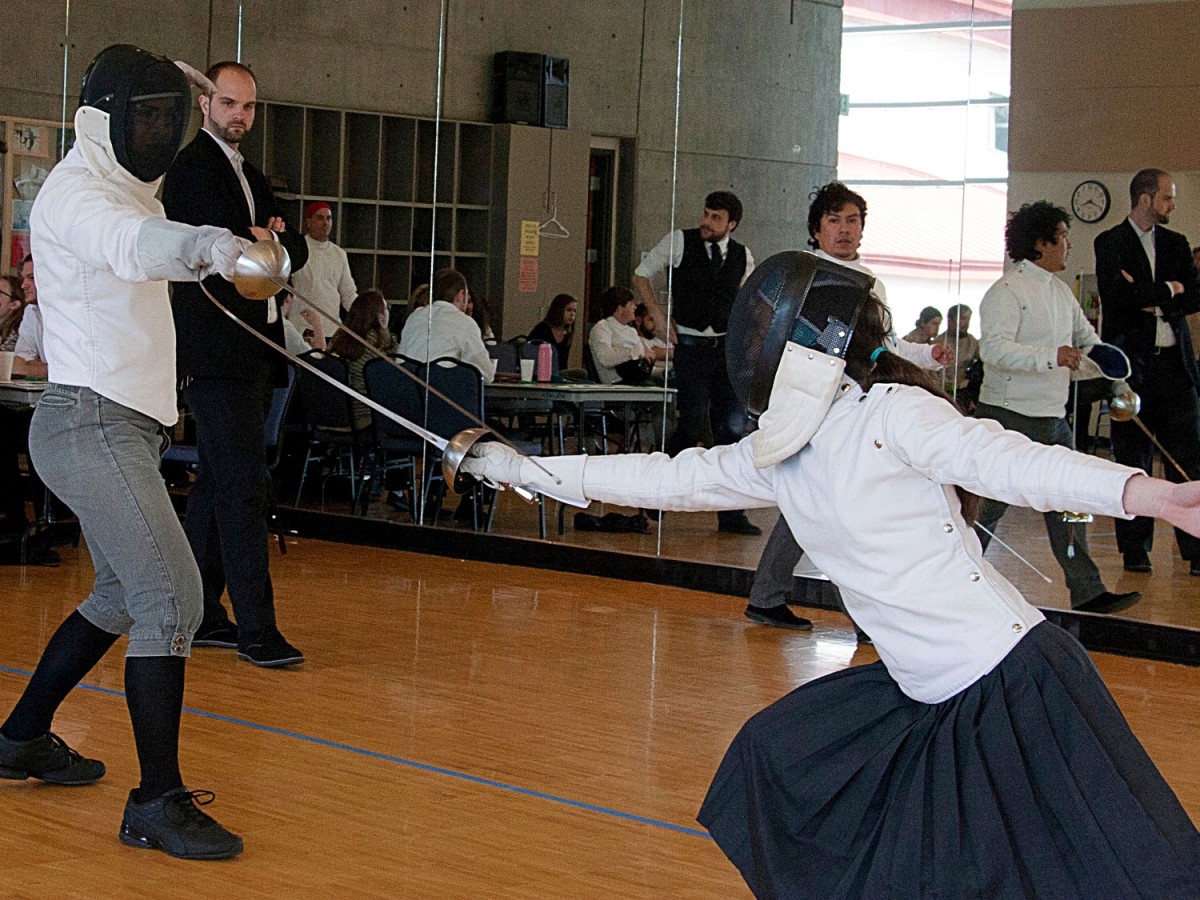Introduction to Fencing 119

Introduction
A few basic epee fencing techniques. I read an old fencing manual which uses the analogy to describe fencing as a dialogue. A conversation between two people. The dialogue is fencing is conducted in a series of moves and counter moves.
I have created a simple mnemonic to help describe some of the basic moves.
- Aug. 2019
Glossary
A - advance
R - retreat
B - beat the blade
AT - attack
E - engage the blade
D - disengage
S - stop
P - parry
RP - reposte
RR - remise
PIL - point in line
PS - pasata soto
FA - false attack
L - lunge
O - opposition
F - flèche attack
T - Aim for toe or feet
A Basic Move - 1
This action is in 3 moves.
B - D - L
Beat the blade in forth, disengage counter clockwise, and lunge to aim at the forearm or the body.
The dialog goes like this. The person initiate action with a beat of the opponent’s blade. After a few exchanges, he noticed the opponent react with a counter beat. This is the setup. In a new action, he beats the blade, and then immediately disengage around the opponent‘s blade, and advance and lunge to land the touch.
Another Basic Move - 2
An action in 4 moves.
B - AT - P - RP
From the en-guarde position, the one player makes a simple beat of the blade from below the opponent’s blade, this exposes the bottom of his arm temporarily. The attacker makes an attempted attack to hit the wrist, if he scores, fine. If he misses, he is ready for the opponent to make a counter attack, he parries and make a quick reposte to the body.
A More Complex move - 3
An action in 3 moves.
FA - RT - S with PIL
This move requires perfect distance.
The action starts with a false attack. The attacker quickly reverse direction and retreats. He is hoping the opponent will take this opportunity to make a counter attack.
Once the opponent starts, he is committed and maybe out of range but decides to commit and continue to chase after the attacker. The attacker will go with a stop to the high line keeping his point in line.
Another Complex Move - 4
An action in 3 moves.
E - S - O
This action requires absolute point control.
This dialog starts with the two players engage their blades. The attacker exposes his forearm as an invitation to his opponent. Once the bait is taken and his opponent makes a straight attack for the arm or body, the first player drops his guard and attempt to make a stop to the opponents attacking wrist. This is a small target but a deadly one. The three side of a triangle Is formed with the two sides of the triangle made up of the forearm and the weapon while the hypotenuse of the triangle made up of the opponent’s weapon. The shortest distance is the stop to the wrist. If the point misses the target, the player quickly raises his guard in opposition parry and keeping his point in line hoping to score a double touch.

A Surprise Move - Toe Touch
A simple but surprise action in 3 moves.
A - L - T
Advance to initiate an attack, lunge and drop the point downward and aim for the toe.
Be prepared to parry if you miss and hit the ground or remise to the body.
Another Surprise Move
This action should be used infrequently since it is unconventional.
It can be accomplished in 2 moves.
PIL - PS
In response to an attack from your opponent to the high line, Keep your point in line and duck your head and body to avoid the attack. The opponent will miss and walk into your point.
Summary
In each of the four moves, the idea is simple but the execution requires practice, precision and timing and distance. These are the very things a good fencer must be trained and prepared if he is to succeed.
I mention these actions are very similar to having a conversation or a two way dialog. An action is initiated by one party, which expects a reaction. If the conversation goes as planned, a stop or interrupt can complete the exchange and score a touch. In fencing terminology, these may be referred to as “second intention”. That is to say, the original intent of the fencer was just a ruse. The ultimate goal is to deceive the opponent thinking he has an opening or advantage but then falls for the trap.
This content is accurate and true to the best of the author’s knowledge and is not meant to substitute for formal and individualized advice from a qualified professional.
© 2019 Jack Lee






